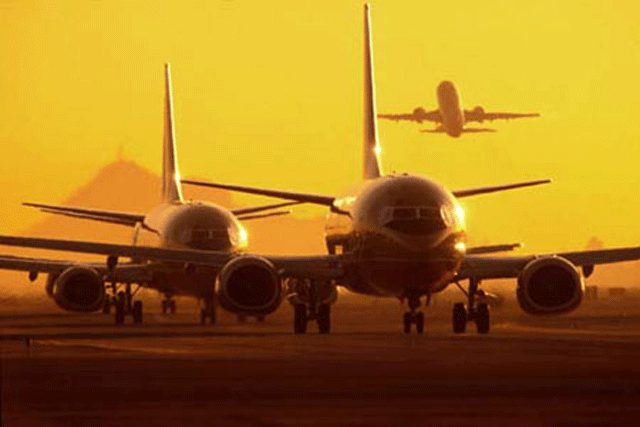Europe Cargo Flat As Capacity
Abounds

The European air cargo industry isn’t
getting off the ground easily this year, as a glut in capacity and relatively
stable exports are keeping purchasing and pricing flat while costs like
kerosene are stabilized but still up. The message for companies that want
to save some money shipping seems to be: If you’ve got it in Europe
move it now. It looks like a buyer’s market.
Economists at the International Air Transport
Association in Geneva predict there will only be about 5% growth in global
air cargo tonnage this year to about 27 million tons. The group sees annual
cargo tonnage growth remaining basically flat – at under 5% until
2010 - with the exception of Middle East and Asia, which are seen as somewhat
busier - at about 6% growth. Still, with capacity ever on the rise, even
mediocre growth in tonnage is not going to help falling or flat pricing
of late.
“We have to wait and see what happens
in the next few months,” said Lorne Riley, a spokesman at IATA.
“The Middle East for instance, is
adding a lot of freight capacity and at this point it’s difficult
to see how that capacity will fit demand.”
He wouldn’t say how IATA sees that
affecting cargo pricing.
“We project that overall global aircraft
deliveries will be up 5.9% in 2007, with more than 50% of that capacity
going to Asia,” Riley said.
A further expansion in Asian, Middle Eastern
(or other) capacity could soften air cargo pricing even more, especially
if exports slip, or if there is a regional or more widespread economic
downturn there or elsewhere in the world. Fortunately for Asia, (and everywhere
else), that doesn’t look set to happen, as markets everywhere have
been showing improvements of late.
(The recent drop in world indices as a result
of the Shanghai Sneeze should turn out to be just a bump in the road.)
“The general trend of the last several
years hasn’t changed much, and we’re still seeing a soft market,”
said Charles Devos, a business development manager at Trans Val Air, a
forwarder operating out of London’s Gatwick Airport.
The company also services Heathrow and has
offices in Dubai.
“Both air freight and sea freight
shippers are struggling to fill containers; and (in general, in the U.K.
and continental Europe) rates have plummeted,” Devos said.
“Forwarders have been trying to correct
that with things like fuel surcharges.” He called some of the pricing
of late “ridiculous.”
Devos says however, that Trans Val’s
business has remained robust because it’s a niche forwarder that
has kept its attention on customers and the details.
Large shippers and integrators like DHL,
FedEx, TNT and UPS haven’t helped the business of small forwarders
either, Devos says, as now more than 50% of the air export volume from
the U.K. is serviced by those large public company players.
“It’s the same scenario in (continental)
Europe; it hasn’t done our business any good. Times are tricky.”
Peter Winter, an export manager for Germany
at Kuehne & Nagel in Frankfurt, could just be one such large logistics
player Devos is referring to that are putting the heat on smaller forwarders.
Winter agrees even for Swiss-based Kuehne
& Nagel, purchasing at Frankfurt is slow, capacity is up and pricing
is flat at best.
But still, he foresees 8% to 10% growth
in tonnage out of Frankfurt this year because of new local business he
expects to get.
“The market will grow somewhat, especially
in the second half of the year,” Winter said.
“On European routes to the U.S. and
South America especially, there’s room for improvement,” while
Asia is showing better demand than the rest of the market, he said.
“Airfreight rates are seeing a lot
of downward pressure, and that probably won’t change this year,”
Winter said, adding that he thought cargo prices could have a way to go
before hitting absolute rock bottom.
George Frey
|



